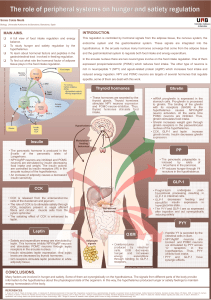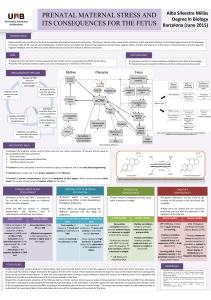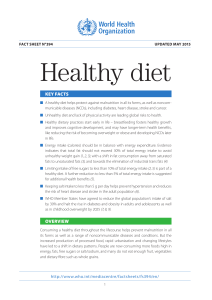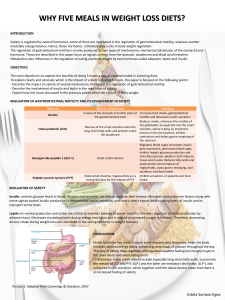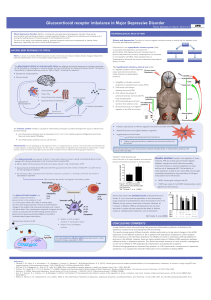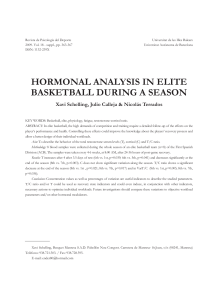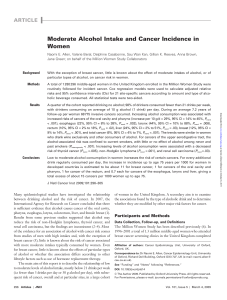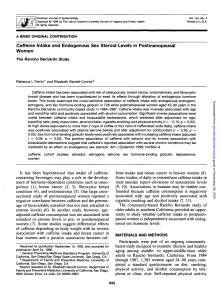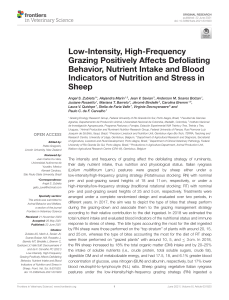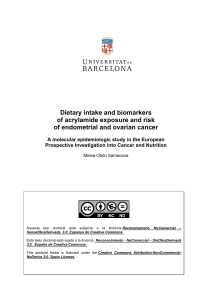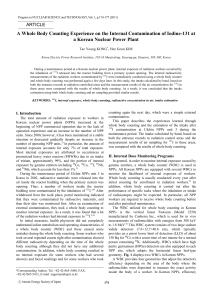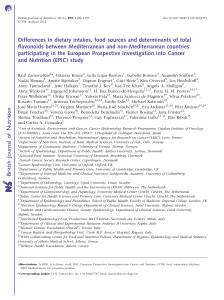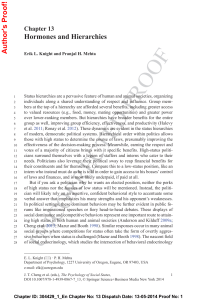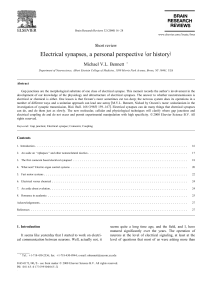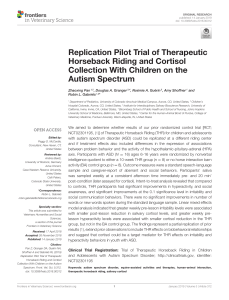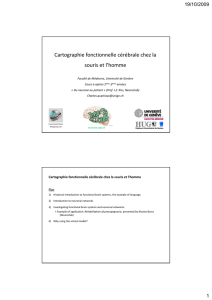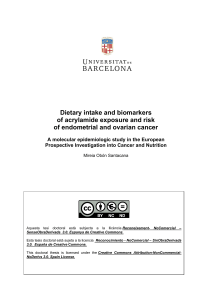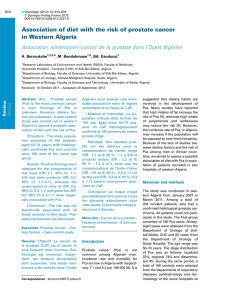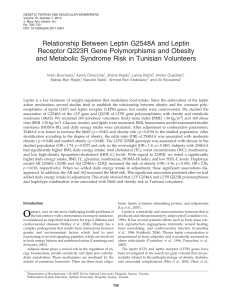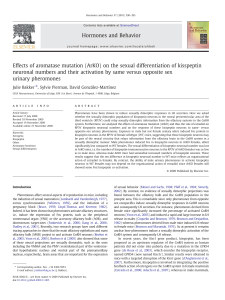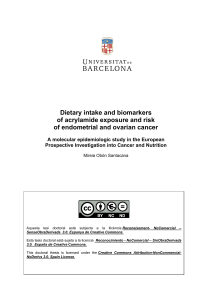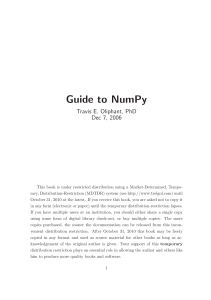HOW EMOTIONS INFLUENCE APPETITE REGULATION
publicité
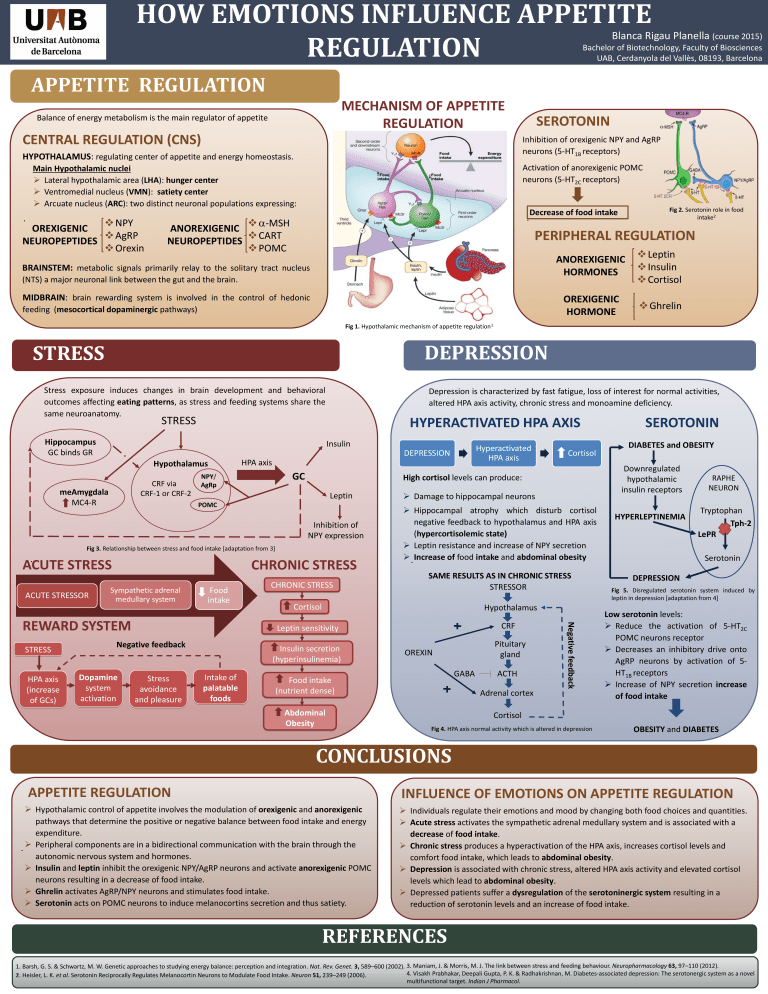
HOW EMOTIONS INFLUENCE APPETITE REGULATION Blanca Rigau Planella (course 2015) Bachelor of Biotechnology, Faculty of Biosciences UAB, Cerdanyola del Vallès, 08193, Barcelona APPETITE REGULATION MECHANISM OF APPETITE REGULATION Balance of energy metabolism is the main regulator of appetite CENTRAL REGULATION (CNS) Inhibition of orexigenic NPY and AgRP neurons (5-HT1B receptors) HYPOTHALAMUS: regulating center of appetite and energy homeostasis. Activation of anorexigenic POMC neurons (5-HT2C receptors) Main Hypothalamic nuclei Lateral hypothalamic area (LHA): hunger center Ventromedial nucleus (VMN): satiety center Arcuate nucleus (ARC): two distinct neuronal populations expressing: . NPY OREXIGENIC AgRP NEUROPEPTIDES Orexin SEROTONIN . a-MSH ANOREXIGENIC CART NEUROPEPTIDES POMC Fig 2. Serotonin role in food intake2 Decrease of food intake PERIPHERAL REGULATION BRAINSTEM: metabolic signals primarily relay to the solitary tract nucleus (NTS) a major neuronal link between the gut and the brain. MIDBRAIN: brain rewarding system is involved in the control of hedonic feeding (mesocortical dopaminergic pathways) ANOREXIGENIC HORMONES Leptin Insulin Cortisol OREXIGENIC HORMONE Ghrelin Fig 1. Hypothalamic mechanism of appetite regulation1 DEPRESSION STRESS Stress exposure induces changes in brain development and behavioral outcomes affecting eating patterns, as stress and feeding systems share the same neuroanatomy. Depression is characterized by fast fatigue, loss of interest for normal activities, altered HPA axis activity, chronic stress and monoamine deficiency. STRESS Hippocampus GC binds GR HYPERACTIVATED HPA AXIS Insulin DEPRESSION Hypothalamus CRF via CRF-1 or CRF-2 meAmygdala MC4-R HPA axis GC NPY/ AgRp Leptin POMC Fig 3. Relationship between stress and food intake [adaptation from 3] . ACUTE STRESS CHRONIC STRESS Sympathetic adrenal medullary system Food intake STRESS HPA axis (increase of GCs) Negative feedback Dopamine system activation Stress avoidance and pleasure CHRONIC STRESS Hippocampal atrophy which disturb cortisol negative feedback to hypothalamus and HPA axis (hypercortisolemic state) Leptin resistance and increase of NPY secretion . Increase of food intake and abdominal obesity SAME RESULTS AS IN CHRONIC STRESS STRESSOR Hypothalamus Leptin sensitivity CRF Insulin secretion (hyperinsulinemia) Intake of palatable foods Damage to hippocampal neurons Cortisol OREXIN GABA Food intake (nutrient dense) Abdominal Obesity Pituitary gland ACTH DIABETES and OBESITY Downregulated hypothalamic insulin receptors Negative feedback REWARD SYSTEM Cortisol High cortisol levels can produce: Inhibition of NPY expression ACUTE STRESSOR Hyperactivated HPA axis SEROTONIN Adrenal cortex HYPERLEPTINEMIA RAPHE NEURON Tryptophan Tph-2 LePR Serotonin DEPRESSION Fig 5. Disregulated serotonin system induced by leptin in depression [adaptation from 4] Low serotonin levels: Reduce the activation of 5-HT2C POMC neurons receptor Decreases an inhibitory drive onto AgRP neurons by activation of 5HT1B receptors Increase of NPY secretion increase of food intake Cortisol Fig 4. HPA axis normal activity which is altered in depression OBESITY and DIABETES CONCLUSIONS APPETITE REGULATION INFLUENCE OF EMOTIONS ON APPETITE REGULATION Hypothalamic control of appetite involves the modulation of orexigenic and anorexigenic pathways that determine the positive or negative balance between food intake and energy expenditure. . Peripheral components are in a bidirectional communication with the brain through the autonomic nervous system and hormones. Insulin and leptin inhibit the orexigenic NPY/AgRP neurons and activate anorexigenic POMC neurons resulting in a decrease of food intake. Ghrelin activates AgRP/NPY neurons and stimulates food intake. Serotonin acts on POMC neurons to induce melanocortins secretion and thus satiety. Individuals regulate their emotions and mood by changing both food choices and quantities. Acute stress activates the sympathetic adrenal medullary system and is associated with a decrease of food intake. Chronic stress produces a hyperactivation of the HPA axis, increases cortisol levels and comfort food intake, which leads to abdominal obesity. Depression is associated with chronic stress, altered HPA axis activity and elevated cortisol levels which lead to abdominal obesity. Depressed patients suffer a dysregulation of the serotoninergic system resulting in a reduction of serotonin levels and an increase of food intake. REFERENCES 1. Barsh, G. S. & Schwartz, M. W. Genetic approaches to studying energy balance: perception and integration. Nat. Rev. Genet. 3, 589–600 (2002). 3. Maniam, J. & Morris, M. J. The link between stress and feeding behaviour. Neuropharmacology 63, 97–110 (2012). . Heisler, L. K. et al. Serotonin Reciprocally Regulates Melanocortin Neurons to Modulate Food Intake. Neuron 51, 239–249 (2006). 4. Visakh Prabhakar, Deepali Gupta, P. K. & Radhakrishnan, M. Diabetes-associated depression: The serotonergic system as a novel 2. multifunctional target. Indian J Pharmacol.
